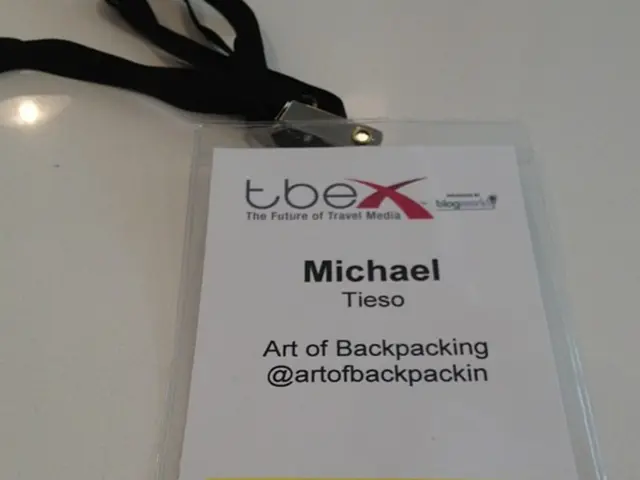Techniques for Expressing Emotion in Artwork
Evoking Emotion in Art: A Tale of Color, Composition, and Expression
Art's ability to stir the emotions lies in its unique capacity to communicate factors that often prove elusive to spoken language. Whether it is a dynamic painting, a series of intricate sculptures, or any other form of visual art, the power to convey and evoke powerful human feelings is at the heart of art's enduring appeal.
When an artist succeeds in imbuing their work with emotion, they create a connection that endures, affecting countless individuals who engage with their artistry. Emotion in art manifests in a myriad of forms, from joy and affection to sadness and anger. The artist's skill in capturing and expressing these emotions is what lends their work relevance and resonance with their audience.
Through the thoughtful employment of color, composition, facial expressions, and body language, artists devise a visual language that speaks directly to the viewer's emotions. This emotional connection is what imbues art with its profound emotional force, allowing it to evoke a diverse range of feelings and experiences within those who interact with it.
Color: The Hues of Emotion
Different colors possess the power to convey distinct emotions, and artists can harness these properties to enhance their creations. Warm colors — such as reds, oranges, and yellows — tend to evoke feelings of heat, energy, and enthusiasm, while cool colors, like blues and greens, can provoke a sense of tranquility, melancholy, or calmness. masterful color selection can evoke specific emotional responses in viewers.
The Art of Composition
In addition to color, composition plays a vital role in emotionally resonant art. The arrangement of visual elements within a work can significantly impact the emotional response it elicits. Harmonious, balanced compositions can evoke feelings of stability and tranquility, while dynamic, asymmetrical compositions can create a tense, unbalanced atmosphere. By understanding how color and composition work together, artists can craft pieces that are emotionally compelling and visually striking.
Facial Expressions and Body Language
The human face and body are laden with expressive potential, capable of conveying a wide spectrum of emotions through subtle shifts in expressions and body language. Artists who can accurately capture and elicit these details can create work that is rich with emotional depth and resonance. Facial expressions like furrowed brows, raised eyebrows, or a slight smile can elicit different emotional responses, while body language — such as stance, posture, or gestures — can also convey emotions effectively.
Creating an Emotional Atmosphere
Atmosphere and mood are critical components of emotionally evocative art. Artists can employ various techniques, such as proper lighting, perspective, and spatial arrangement, to craft a specific environmental tone that enhances the emotional impact of a work. Lighting — whether dramatic, diffused, or ethereal — can greatly affect the mood of a piece, shaping the viewer's emotional response. Similarly, weather conditions, such as rain, fog, or brilliant sunshine, can contribute to the overall emotional ambience.
Inspiration from Personal Experience
Drawing from one's personal experiences and memories can inspire art that resonates with authenticity and emotional depth. By tapping into their own lives, artists can create work that not only captures the viewer's attention but also stirs their emotions, forging a deep sense of connection between artist and viewer.
Mediums, Styles, and Inspiration
Experimenting with different artistic mediums and styles can help artists expand their emotional vocabulary, opening up new avenues to communicate with their audience. Diverse mediums lend themselves to particular emotional expressions, from the vibrant intensity of oil paints to the ethereal qualities of watercolors. Similarly, adopting different artistic styles can impact how an artist's emotional intent is perceived, from the immediacy and intimacy of realism to the cryptic allure of surrealism.
Seeking inspiration from other artists and art movements can provide invaluable insights and techniques for effectively expressing emotions in art. Throughout history, art has been deeply influenced by the emotions, ideas, and passions that have defined generations. By learning from those who have come before us, we can gain new perspectives and insights, strengthening our artistic abilities and emotional resonance.
In conclusion, art's power to evoke emotion lies in the delicate balance between color, composition, facial expressions, body language, atmosphere, personal experience, and inspiration. Skilled artists can harness these elements to create works that not only engage the eye but also stir the heart, forging deep, lasting emotional connections with their audience. By mastering these techniques, artists can create art that speaks to the human experience in a profound and enduring manner.
Art incorporating technology, such as AI-generated visual art, can expand the emotional potential of traditional visual art methods by simulating human-like creativity and emotions.
As artificial intelligence advances, it may provide new opportunities for artists to create works that evoke complex and nuanced emotions, pushing the boundaries of what was previously thought possible in the realm of visual art.




